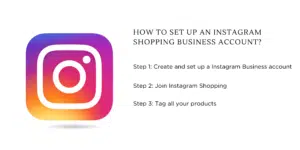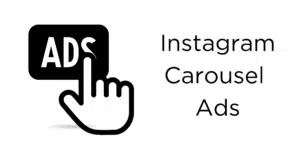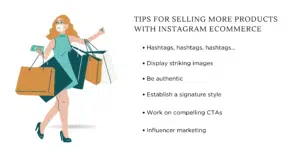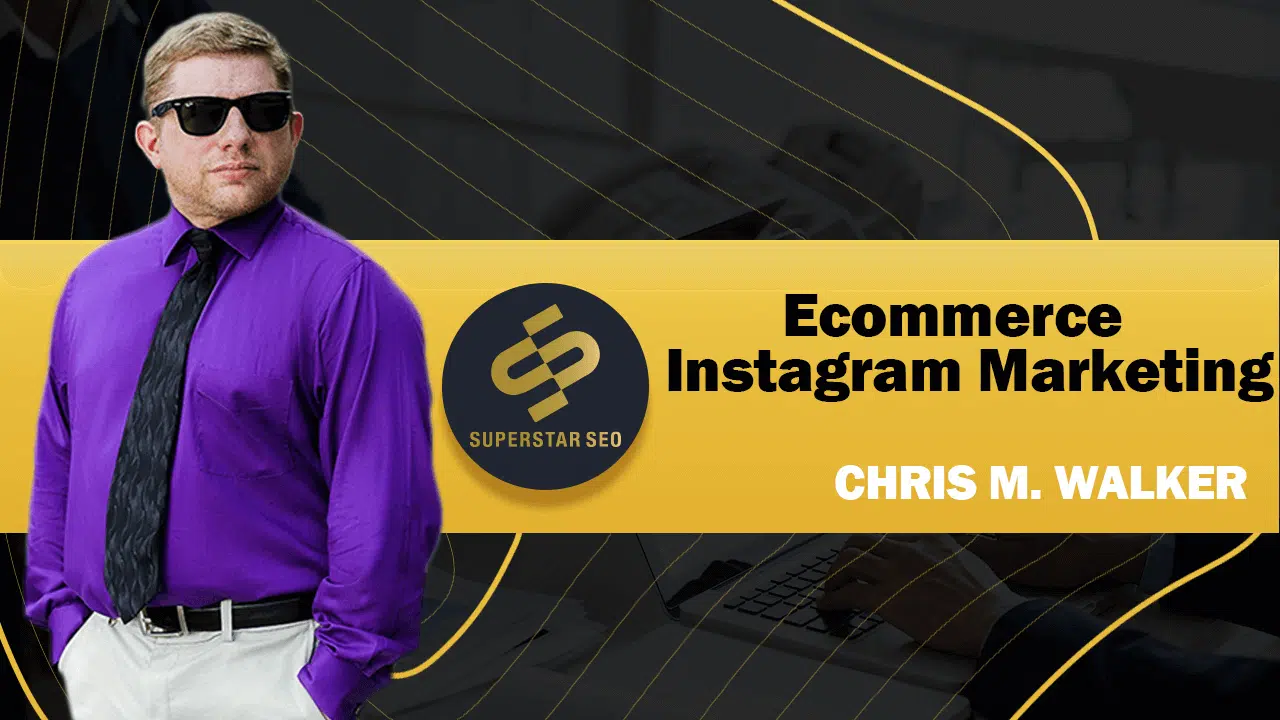The Essential Guide To Instagram eCommerce In 2021
Clocking over 1 billion global users, Instagram is one of the fastest-growing social media platforms globally.
Though the company had eCommerce features pre-pandemic, it was during the pandemic that Instagram Shopping became alive.
So, how does it help your eCommerce business?
There are tons of ways Instagram eCommerce can help your business revenues and eCommerce sales, which we will look at later on.
This piece will identify how Instagram shopping has enabled businesses to thrive in the online market and tips on how you can leverage such features for Instagram eCommerce success. So, shall we?
After reading this guide to Instagram shopping, you’ll learn:
- How to set up an Instagram Shopping account
- Instagram Shopping features for your business
- Different Instagram Ad types
- Important practices for a compelling eCommerce page on Instagram
- Setting up your business for new features
Facebook confirmed in 2019 during a study that Instagram plays a crucial role at every point of the purchase process.
Folks use the platform to discover new trends, do a bit of product research, eventually decide whether or not to make a purchase.
The study further revealed that people were more likely to take the following actions once they see a product or service on Instagram;
- Search for more information
- Visit the company’s website or app
- Make an online or offline purchase
As you can see, we spend most of our time on Instagram looking at product-heavy content. So, as a business and an eCommerce platform, how do you leverage it?
Instagram has three features for eCommerce businesses, including Instagram Dynamic Ads, Instagram Checkout, and Instagram Shopping.
Instagram Shopping
Most social media accounts have a business feature that directs clients to the brand’s website. What Instagram eCommerce does is to bring the products closer to clients on the app itself.
It takes the shopping experience a notch higher by allowing businesses to have their catalog on the app and buy directly through Instagram Checkout or click to a third party transaction.
Instagram has been known to share products and services for a long time. However, brands before could drive sales only through links on the bios or Instagram stories.
What Instagram Shopping adds is a new and streamlined process from the moment you see a product you like up to when you buy it.
Similar article – Best eCommerce Marketing Tools in 2022
How to set up an Instagram Shopping Business account

Before you start shopping with Instagram, you need to comply with a few rules and regulations to check eligibility.
- Your business falls in the category of Instagram’s supported markets. Checklist here.
- You offer a physical, eligible product or service.
- Your Instagram account is set to a business profile.
- Your brand owns your eCommerce website.
- Your business follows all of Instagram’s merchant agreements and commerce policies.
- Your Instagram account demonstrates trustworthiness.
Step 1: Create and set up a Instagram Business account
The first step is to turn your account into an Instagram business profile. It is easy and only takes three steps;
- Shift to a Business Account. Go to settings and click on “Switch to a business.”
- Connect to Facebook account. It is a must to connect to Facebook to access the full Instagram Business features.
- Fill in your Instagram business page. Enter important information about your company like physical address, name, business email address, etc.
It’s worth noting that getting Facebook Shopping Catalog synched up with Instagram Business takes a few days, so it is best to start the process as soon as possible, especially if you’re under a tight deadline.
Facebook’s Catalog Manager also allows the use of two third-party eCommerce companies and Facebook partners Shopify and BigCommerce.
Step 2: Join Instagram Shopping
Now that you have created a business account and connected it with your Facebook page, it is time to sign up for shopping.
To do this, head to your Instagram profile > settings > Business > Shopping. Then, click on shopping and wait until Instagram gets back to you. It may take a couple of days.
Step 3: Tag all your products
You are all set for business, and your Instagram account is all glammed up. The next step is to start rolling with a customer or two.
Take a photo with your products and spice it up with effects and filters to your desired likeness. Ensure you tag the products by typing the name and price, redirecting potential clients to your catalog page.
You can tag up to five products per image and even more on videos and multiple images.
In Instagram stories, you can add tags through stickers that are customizable to match the product’s color.
You may also like – Ecommerce SEO: How to Get Targeted Traffic (Customers) From Google Searches
Instagram Ads
Regular Instagram posts may not reach the intended target audience, and you might need to boost them a little to increase this reach.
Instagram’s advertising feature is intertwined with Facebook, and it is with no doubt the most powerful tool for eCommerce.
You can set up a Dynamics Ads campaign that runs alongside Facebook and Instagram at the same time. Or you can boost an already posted photo in Instagram Ads Manager.
Live shopping stream
Another way to advertise your products and boost sales is through Livestream shopping. Instagram Live Shopping was introduced to bring creators and brands to sell their products in a live stream.
It’s like having a virtual shopping network where you sell products in real-time. Of course, you can use Instagram Live Shopping in product launches too!
Instagram Explore Ads
Instagram Explore Ads work on the explore section of your app, and to activate it, you must indicate in Ads Manager.
But why the Explore section?
When you click on Explore on Instagram, you are directed to a bunch of posts that are trending during that period.
Folks use the explore section to check out new stuff, making it a nice place to place your advertisements. The section also helps generate brand awareness.
Rather than appearing on the explore grid on Instagram, these ads appear when you are looking for something similar or related to the product you’re advertising.
Related – Social Media Ecommerce
Instagram Carousel Ads

When Instagram rolled out multi-image posts, the reception wasn’t as warm as when they brought Instagram Live.
However, the team at Instagram leveraged multi-image posts into carousel ads. The ads allow you to post multiple images in one ad.
So, if you’re selling products of different colors, let’s say shoes, you can advertise them all in one post.
It is an excellent way to show diversity in your brand. For an even heavier impact, use videos on the carousel ads.
Canvas Story Ads
Also known as instant Experience Ads, Canvas Ads are an excellent way to give users a live purchasing experience.
It takes the Instagram user straight into the ad, immersing them in a reality that they can buy your product with no hassle.
To design this kind of ad, you can use Facebook Instant Experiences templates and tools. The ad will automatically sync and send to Instagram stories.
User-generated content
If you’re not ready for an advertising budget, you can still appeal to your clients by posting user-generated content.
It will expand your reach and boost sales, strengthening your brand’s trustworthiness.
If you are starting up a business, it would be good to ask for reviews from customers where they share a photo on Instagram tagging your business account.
A human brand image appears more authentic and show your products in action. Reposting user-generated content increases your awareness and credibility as a brand.
Tips for selling more products with Instagram eCommerce

Your Instagram page is up and running, Instagram Shopping all set, it’s time to catch a potential client’s eye.
Below are some compelling strategies to attract customers and encourage them to shop.
You may also like – Ecommerce Email Marketing: Turn Subscribers Into Salivating Buyers
Hashtags, hashtags, hashtags…
The use of hashtags is an ingenious marketing strategy on Instagram.
Not only does it increase your visibility on relevant content, but it also brings you up to speed for potential engagement.
When posting, use relevant hashtags and ensure to be as accurate as possible. In addition, include keywords that Instagram users like to use.
For instance, a jewelry store can use the hashtag #Jewelrystore or #Louisianasilverstore if located in Louisiana.
The more targeted the hashtags, the closer the reach. Also, don’t forget to put general hashtags as well.
Display striking images
Instagram is all about visuals.
If you’re lucky, few people will read through a paragraph of your caption if the image doesn’t sit right.
Otherwise, they’ll continue scrolling for engaging images.
If you want Instagram users to stop by and spend time on your post, ensure you have well-centered images, the right blend of colors, and an attention-grabbing shot.
You can go out of your way to incorporate images in trendy backgrounds in a real-world setting.
Or try out the numerous photo editing tools to give your photo an oomph factor.
Be authentic
Just like social media engagement, to thrive in Instagram eCommerce, you need to be authentic.
Steer away from product copy and bring in your personality and voice. Authenticity always connects with clients and, at times, brings out emotions.
Think of what inspired your product to be where it is. Then, tell a story of how it is made.
Establish a signature style
Having a design or style that defines your company easily puts you on the spot amongst competitors.
When a customer is scrolling through their Instagram feed, they’ll immediately notice your brand if it stands out.
A signature style can be a mix of colors, specific designs, or editing styles on photo uploads. Stellar.stardust, for instance, has photos uploaded individually on a black or plain gray background.
Remember, when you come up with a signature, stick to it until it intertwines with your brand.
Work on compelling CTAs
While photos are the creme de la creme of Instagram commerce, a compelling call to action does it better.
It can be a simple “Buy it Now” or a witty sentence that captures the customer’s attention.
A spiced-up CTA with emojis and colors has a better chance of converting than a long boring sentence.
Influencer marketing

Influencers have been an important marketing tool ever since the start of Instagram.
They help brands reach millions of followers. However, according to Mobile Marketer, micro-influencers (1,000 – 10,000 followers) have more engagement than those with 10,000+ followers.
Customers value engagement and feel more comfortable buying products from people they trust.
As much as someone like Rihanna may have millions of followers, it is easier to feel the results of a certain product on someone with, let’s say, 1,500 followers.
That’s why it is easy for micro-influencers to drive more sales for businesses.
You may also like – What is Ecommerce Marketing? Surefire Roadmap for Business Growth Acceleration
Setting up your Instagram business for new features
Instagram has a ton of features, and they aren’t planning to stop anytime soon.
So, how do you ensure your business is up to date and set up for new features?
First off, you need to regularly check your insights section located on the Instagram profile page.
Instagram insights give your brand all the Instagram analytics and metrics that gauge your brand’s engagements with users.
Here, you’ll find the number of likes, engagement rates, shares, and comments.
Use the insights to check which posts do well or if your ads made the right impact.
There is also the Instagram Checkout option, although it is still in beta mode and available for a few larger brands.
The checkout feature makes it easy for clients to make purchases without leaving the Instagram app. It is so convenient as you can quickly purchase and go back to shopping for other products from different brands.
Related – Your E-Commerce Videos: Here Is The Complete 2022 Cheat Sheet
Conclusion
The bottom line for Instagram eCommerce is to increase the chances of making a sale and getting more revenue.
As a brand, you can combine a mix of paid and organic content to understand your target audience better.
Workaround all features and Instagram updates to keep your business relevant and in check with the current trends.
All in all, have fun posting and always keep your content fresh!
You may also like – Ecommerce Marketing Essentials: 17 Actionable Tactics to Drive More Sales





